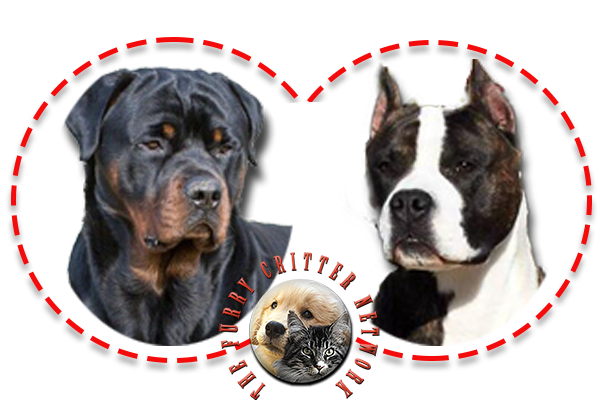American Staffordshire Terrier Breed Description - Cross #2
It was the cross between the Bulldog and the terrier that resulted in the Staffordshire Terrier, which was originally called the Bull-and-Terrier Dog, Half and Half, and at times Pit Dog or Pit Builterrier. Later, it assumed the name in England of Staffordshire Bull Terrier.
These dogs began to find their way into America as early as 1870, where they became known as Pit Dog, Pit Bull Terrier, later American Bull Terrier, and still later as Yankee Terrier.
In 1936, they were accepted for registration in the AKC Stud Book as Staffordshire Terriers. The name of the breed was revised effective January 1, 1972 to American Staffordshire Terrier. Breeders in this country had developed a type which is heavier in weight than the Staffordshire Bull Terrier of England and the name change was to distinguish them as separate breeds.
The American Staffordshire Terrier's standard allows a variance in weight, but it should be in proportion to size. The dog's chief requisites should be strength unusual for his size, soundness, balance, a strong powerful head, a well-muscled body, and courage that is proverbial.
To clarify the confusion that may exist, even in the minds of dog fanciers, as to the difference between the American Staffordshire Terrier and the Bull Terrier, a comment on the latter may be helpful. The Bull Terrier was introduced by James Hinks of Birmingham, who had been experimenting for several years with the old bull-and-terrier dog, now known as Staffordshire. It is generally conceded that he used the Staffordshire, crossed with the white English Terrier, and some writers contend that a dash of Pointer and Dalmatian blood was also used to help perfect the all-white Bull Terrier.
In mentioning the gameness of the Staffordshire, it is not the intention to tag him as a fighting machine, or to praise this characteristic. These points are discussed because they are necessary in giving the correct origin and history of the breed. The good qualities of the dogs are many, and it would be difficult for anyone to overstress them.
According to the American Kennel Club, these dogs are "smart, confident, good-natured companions. Their courage is proverbial. A responsibly bred, well-socialized AmStaff is a loyal, trustworthy friend to the end."






